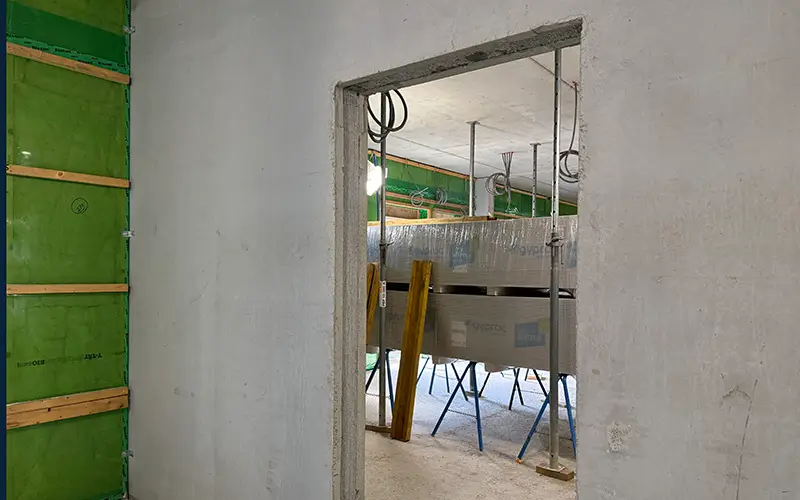Takryttaren comprises 174 rental apartments, an LSS housing unit and 70 co-living homes. From the outset, Uppsalahem set a climate budget for the project, placing high demands on both the contractor and the supplier.
“Takryttaren is our first project procured with a so-called climate budget. As a developer, we must dare to set requirements to drive development forward,” says Anna-Lotta Andersson, Head of New Production at Uppsalahem.
To meet these requirements, Thomas Betong developed new concrete products with very low CO₂ footprints, while the structural design was optimized to reduce material use.
“Our design department has invested significant resources in optimizing the frame and reducing the amount of concrete and reinforcement in the precast elements. We have also developed entirely new project-specific concrete products with extremely low GWP values,” says Carina Edblad, CEO of Thomas Betong.
The low-carbon products used include slabs at Level 5, double walls at Level 6 and ready-mix concrete at Level 6. This means up to 60 percent lower climate impact compared to the industry reference. These levels are not yet included in Svensk Betong’s guidelines.
From theory to practice through close collaboration
NCC is the general contractor for the project and has worked closely with both the developer and the supplier to achieve the climate goals.
“It’s an exciting challenge to build with a focus on significantly reduced climate impact. Projects like this show that we can cut emissions substantially when we work together and closely with our customers toward clear goals,” says Niklas Sparw, Business Area Manager, NCC Building Sweden.
The project also builds on a previous study by IVL Swedish Environmental Research Institute, which showed that low-carbon concrete combined with semi-precast solutions can halve climate impact. A target that has now been exceeded by a wide margin.
“Two years ago, a theoretical study showed that we could reach 200 kg CO₂e/BTA, meaning a 50 percent reduction in climate impact. That study has guided us. With Takryttaren, we’ve taken it even further, from theory to practice. Takryttaren proves that sustainable construction is possible today and that collaboration is the key to future building projects,” concludes Carina Edblad.

